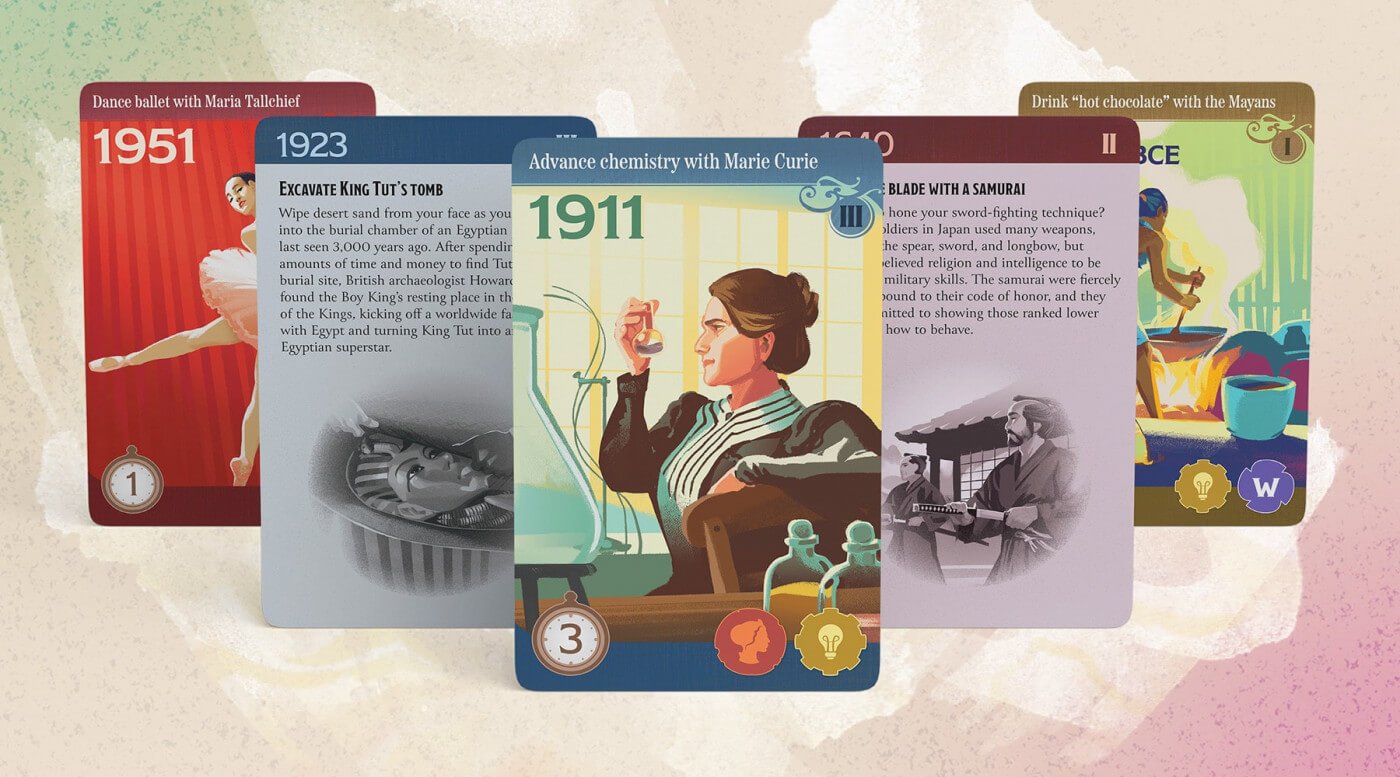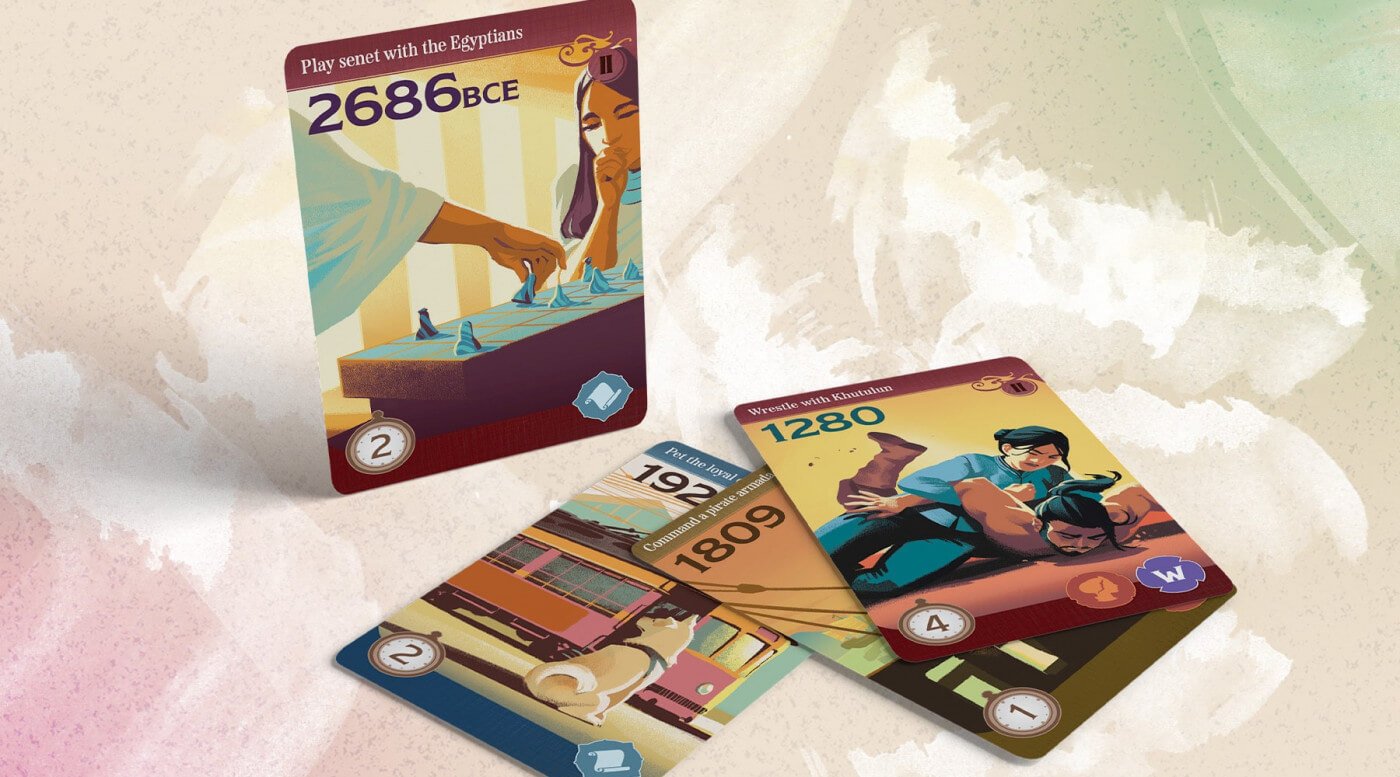107 billion human beings have walked the Earth. That’s a lot of people, doing a lot of things, over a lot of time.
So, we knew when we decided to make a game about human history, we’d have to leave 99.99999999999999999% of human history out of it. How to decide which .00000000000000001% to include?
This post is about how we navigated that problem to choose the events for our latest board game, Trekking Through History.
Let’s tackle the impossible.
Upfront, I emphasize there are no right answers, and it’s certain most everyone will wish some omitted events were included and vice-versa. Which leads me to the first constraint we imposed on ourselves: we can’t capture the full scope of human history, so we shouldn’t try.
Instead we decided we should capture a sampling of the kinds of moments most consistent with the theme of our game. In Trekking through History, you get into a time machine, and tour through time. So our main criterion was to ask: "If you were to actually go on vacation to visit historical events in time, and actually participate in those events, what would you choose to do?"
Asking this question led to two insights:
- There are a lot of pivotal moments in history most would avoid. For example, World War I had an enormous impact on recent world history, but almost no one would opt to go to the trenches and participate in slaughter.
- There are a lot of not-pivotal moments in history that you might be eager to join in, because they’re beautiful, inspirational, or joyful.
And then we found our way.
These two insights led to a more overarching insight: We should focus on moments of beauty and inspiration that illustrate the best and most noble parts of us, and they needn’t all be "pivotal" in the greater narrative of history.
That was THE insight that unlocked the game’s content for us. After that, a bunch of other constraints followed. A lot of them emerged from discussions with our customers, for which we’re deeply grateful. Here’s a look at them summarized:
- The events shouldn’t feel too biased toward European/US/Western history. This was a hard one to honor because we are absolutely steeped in the culture from which we come, and it can be hard to break free of it.
- The events should represent the activities of many different kinds of people. Since, in the west, history has usually been written by white men, white men are overrepresented in most historical accounts. We wanted our events to be more representative.
- The events should be a mix of familiar and unfamiliar.
- We would focus mostly on the last 5000 years, since the dawn of writing. Much of history before that is unknown, or too vague or general to represent on a card (however, there is one event from tens of thousands of years ago in Trekking through History, and it’s perhaps my favorite in the game. I won’t spoil it here).
- It must be possible to represent each event vividly in a beautiful illustration.
- There should be variety in the kinds of events you can visit. Variety is the spice of life. The events should be distributed fairly evenly over the last 5000 years.
In addition to the above, we had a lot of input from customers, ordinary people, and experts to get their thoughts on what to include. Even our CEO, Hasan, got involved, which you can read about here. We also partnered with an excellent historian named Heather Siebert to help us satisfy all our criteria. I can’t recommend strongly enough partnering with true subject matter experts if you’re making a game about the real world. We couldn’t have made the game without her.
Now it’s your turn to take a trip through history.
Even so, there’s no way to fully divorce ourselves from our own views of the world.
For example, as game makers, we believe play is a vital human pursuit. So there are a few events in the game about the way humans have played. For instance, you can travel to 655 AD to watch the ancient sport of Ulama. That could seem frivolous to some, even if we think it’s powerful. Which is to say: your mileage may vary.
Nonetheless we’re proud of Trekking through History, and I hope that, if you chance to play it, it’s an occasion for discussion, and learning, and a touch of wonder. We apologize in advance if we’ve left off your favorite event, era, or moment. But we hope you discover new things to love as you play.
It’s amazing that we’re here, and it’s amazing what has happened to lead this moment.
How strange it is to be anything at all.
Trekking Through History features gorgeous artwork. Learn more about the process from the artist himself here.
Did you know a history teacher helped us create Trekking Through History? Read her insights on teaching history in the 21st century here.





